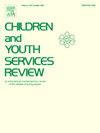平等主义国家的儿童福利不平等:一项挪威队列研究
IF 1.7
2区 社会学
Q1 FAMILY STUDIES
引用次数: 0
摘要
国际上的儿童福利制度在干预和家庭外照料率方面表现出明显的社会人口不平等。本研究调查了挪威的这些不平等现象,重点关注社会经济地位(SES)、种族背景和家庭组成的交叉点。利用个人层面的行政数据,将2005年出生队列与父母的社会人口统计数据和从出生到13岁(2005 - 2018年)的儿童福利记录联系起来。到13岁时,10.9%的儿童至少经历过一次儿童福利干预,2.2%的儿童被安置在家庭外。采用多元logistic回归模型预测13岁儿童福利干预和家庭外安置的累积概率。在社会经济地位和种族背景的交叉点上,挪威出生的孩子的社会梯度最强:到13岁时,29.6%的低社会经济地位的挪威出生的孩子接受了干预,而中等社会经济地位的孩子和高社会经济地位的孩子的这一比例分别为7.3%和3.2%。相比之下,父母为非西方移民的儿童的社会梯度最弱,接受干预的低经济地位儿童占22.3%,中等经济地位儿童占20.9%,高经济地位儿童占16.2%。在社会经济地位和家庭构成的交叉点上,低社会经济地位和在单亲家庭中度过的时间以附加方式增加了干预的风险:57.6%来自低社会经济地位、长期单亲家庭的儿童在13岁之前至少经历过一次儿童福利干预,而来自高社会经济地位双亲家庭的儿童只有1.9%。这些发现强调了定量的、交叉的框架对于理解儿童福利不平等的重要性。本文章由计算机程序翻译,如有差异,请以英文原文为准。
Child welfare inequalities in an egalitarian nation: A Norwegian cohort study
Child welfare systems internationally exhibit marked sociodemographic inequalities in intervention and out-of-home care rates. This study investigates these inequalities in Norway, focusing on the intersections of socioeconomic status (SES), ethnic background, and household composition. Using individual-level administrative data, the 2005 birth cohort was linked to parental sociodemographic data and child welfare records from birth to age 13 (2005–2018). By age 13, 10.9% of children experienced at least one child welfare intervention and 2.2% of children were placed in out-of-home care. Multivariate logistic regression models were used to predict the cumulative probabilities of child welfare intervention and out-of-home placement by age 13. At the intersection of SES and ethnic background, the strongest social gradient was observed for children with Norwegian-born parents: by age 13, 29.6% of children with low-SES Norwegian-born parents had received an intervention, compared to 7.3% of children with middle-SES and 3.2% of children with high-SES parents. In contrast, the weakest social gradient was observed among children with two non-Western immigrant parents, with 22.3% of low SES, 20.9% of middle SES, and 16.2% of high SES children receiving an intervention. At the intersection of SES and household composition, low SES and time spent in a single-parent household increased the risk for intervention in an additive manner: 57.6% of children from low-SES, long-term single-parent households experienced at least one child welfare intervention by age 13, compared to only 1.9% of children from high-SES two-parent households. These findings highlight the importance of a quantitative, intersectional framework for understanding child welfare inequalities.
求助全文
通过发布文献求助,成功后即可免费获取论文全文。
去求助
来源期刊

Children and Youth Services Review
Multiple-
CiteScore
6.30
自引率
6.10%
发文量
303
期刊介绍:
Children and Youth Services Review is an interdisciplinary forum for critical scholarship regarding service programs for children and youth. The journal will publish full-length articles, current research and policy notes, and book reviews.
 求助内容:
求助内容: 应助结果提醒方式:
应助结果提醒方式:


